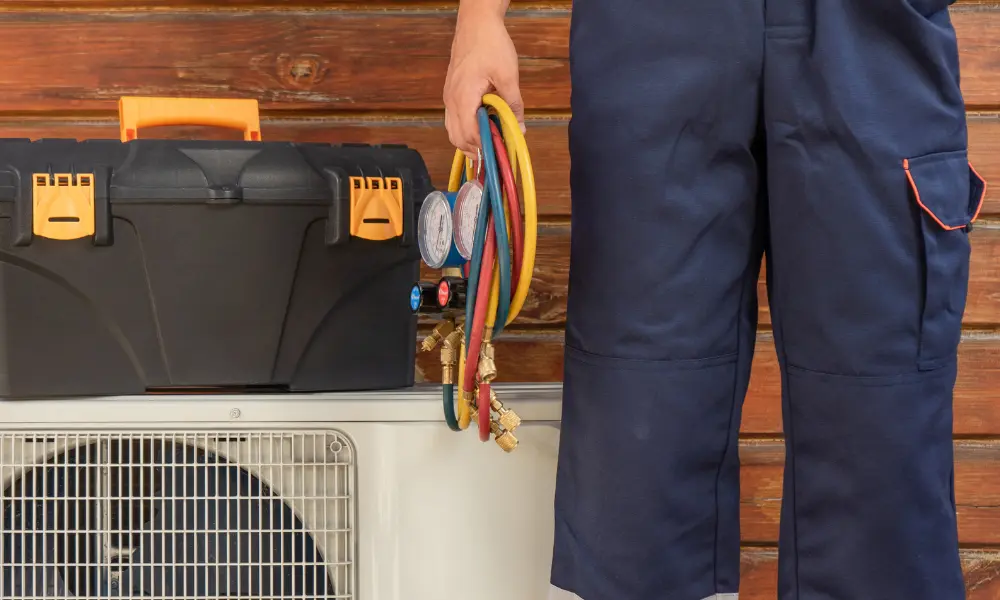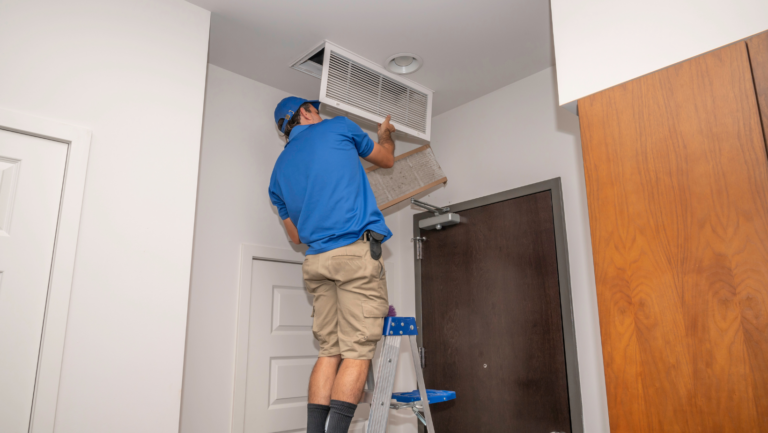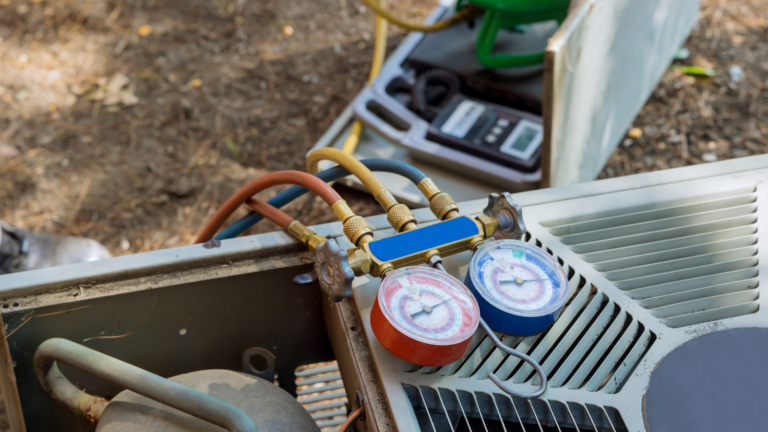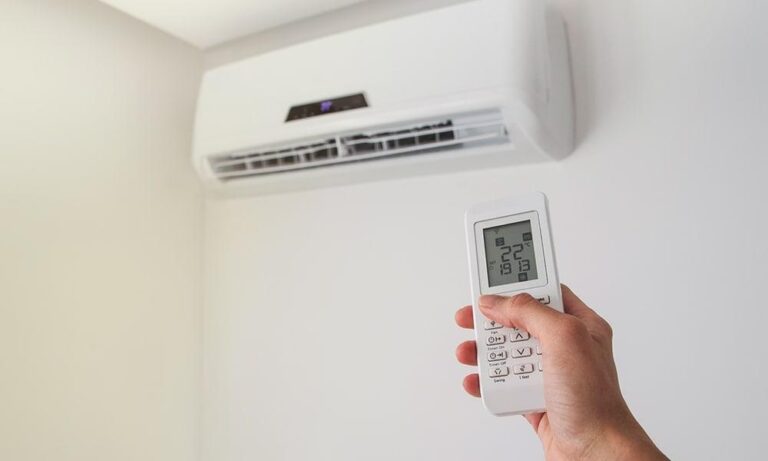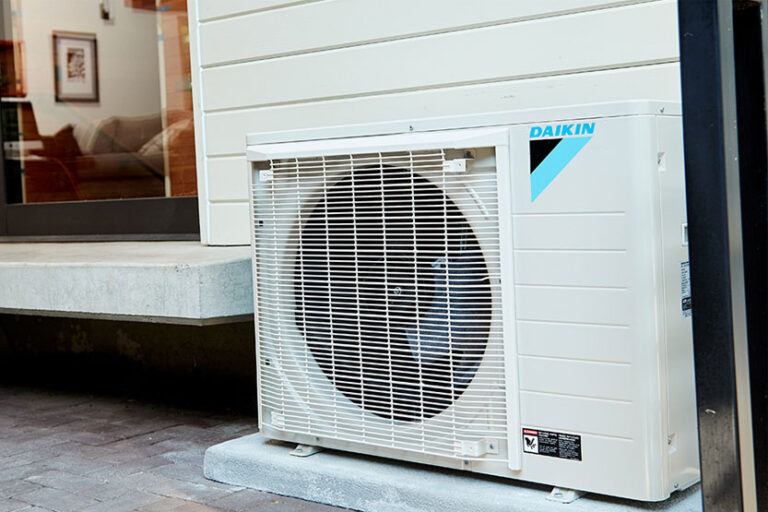DIY Maintenance Tips for Your HVAC System
Keeping your HVAC system in top shape doesn’t have to be a daunting task. In fact, with some straightforward DIY tips, you can keep your home cozy in winter and cool in summer, all while saving a few bucks.
So, what is an HVAC system? HVAC stands for Heating, Ventilation, and Air Conditioning. It’s the workhorse of your home, regulating temperature, humidity, and air quality to ensure comfort all year round. This system includes components like heating, cooling, and air ducts, which work together seamlessly to create a comfortable indoor environment.
Think of your HVAC system as the heartbeat of your home’s comfort. Regular upkeep prolongs the life of your equipment boosts energy efficiency and ensures better indoor air quality. Skip the maintenance, and you might face higher energy bills, frequent breakdowns, and stuffy air. By staying proactive with regular check-ups, you can dodge costly repairs and keep your HVAC system humming smoothly and efficiently.
Understanding Your HVAC System
Understanding your HVAC (heating, ventilation, and air conditioning) system is essential for ensuring home comfort and efficiency.
Components of an HVAC System
Heating Unit – The heating unit, often a furnace or heat pump, warms your home. Furnaces generate heat through fuel combustion (natural gas, oil, or electricity), distributing it throughout the house. Heat pumps transfer heat from the outside air or ground into your home, offering an energy-efficient heating solution.
Cooling Unit – The cooling unit, typically an air conditioner, cools your home by removing heat from the indoor air. This involves refrigerant cycling through coils, absorbing heat from inside and releasing it outside, resulting in a cooler indoor environment during hot weather.
Air Ducts – Air ducts distribute heated or cooled air throughout your home. Properly maintained ducts ensure efficient airflow and good indoor air quality, preventing energy loss and uneven heating or cooling.
How HVAC Systems Work
HVAC systems balance heating, cooling, and ventilation to ensure a comfortable indoor climate. In heating mode, the system’s thermostat detects the need for warmth and activates the heating unit. Warm air is then circulated through the air ducts. In cooling mode, the thermostat signals the cooling unit to start, and the air conditioner removes heat from the indoor air, distributing cooled air via the ductwork. Ventilation, an ongoing process, ensures a continuous supply of fresh air, reducing indoor pollutants and maintaining air quality.
Benefits of DIY Maintenance
Taking a DIY approach to HVAC maintenance has several benefits. It can lead to significant cost savings by reducing the need for professional repairs and lowering energy bills through improved efficiency. Regular upkeep also extends the lifespan of your equipment, ensuring you get the most out of your investment. DIY maintenance helps maintain and even improve indoor air quality by keeping filters and ducts clean, which is crucial for a healthy living environment. An efficiently running HVAC system uses less energy, making it more environmentally friendly and cost-effective.
Safety Precautions Before Maintenance
Before you start any DIY maintenance on your HVAC system, remember these safety precautions. First, turn off the power to your HVAC unit at the circuit breaker to avoid electric shock. Next, wear protective gear like gloves and safety goggles to shield yourself from dust, debris, and sharp components. Also, clean your workspace thoroughly before starting any maintenance tasks. A clutter-free area helps you work efficiently and reduces the risk of accidents.
Monthly HVAC Maintenance Checklist
Maintaining your air conditioning unit monthly is essential for optimal performance. Begin by checking and replacing air filters if they’re dirty, as clean filters improve airflow and efficiency. Inspect your thermostat settings to ensure they’re accurate and your system is running as intended. Clean vents and registers to remove dust and debris that can hinder airflow and reduce air quality.
It’s also important to clear any debris around the outdoor unit, such as leaves, grass, or dirt, to prevent obstructions and ensure it operates smoothly. By following this simple monthly checklist, you can keep your HVAC system running efficiently and effectively.
Seasonal HVAC Maintenance Tasks
Seasonal maintenance is essential for keeping your HVAC system in peak condition throughout the year. Each season brings its own set of challenges and specific HVAC maintenance tips that need to be taken care of.
Spring Maintenance
In the spring, focus on checking refrigerant levels to ensure your system can efficiently cool your home as temperatures rise. Additionally, inspect the condensate drain for any blockages, which can cause water damage and reduce system efficiency.
Summer Maintenance
During the hot summer months, cleaning the evaporator coil is essential to maintain effective cooling. Also, check the fan blades for any signs of wear or damage to ensure they are functioning properly.
Fall Maintenance
As the weather cools in the fall, inspect the heat exchanger for cracks or damage, which can lead to carbon monoxide leaks. It’s also a good time to test carbon monoxide detectors to ensure they are working correctly and can alert you to any dangerous gas buildup.
Winter Maintenance
Check your home’s insulation in winter to help your HVAC system maintain a consistent indoor temperature without overworking. Test the ignition system to ensure your heating unit starts reliably during the coldest months.
DIY Troubleshooting Tips
When your HVAC system isn’t performing as expected, you can try several DIY troubleshooting tips before calling an HVAC technician. If your HVAC isn’t cooling, check the thermostat settings to ensure it’s set to “cool” and the temperature is lower than the current room temperature. Also, inspect the air filter for dirt and debris, which can block airflow and reduce cooling efficiency.
If your AC unit isn’t heating, make sure the thermostat is set to “heat” and the temperature is higher than the room temperature. Check the pilot light or ignition system for issues and ensure the circuit breaker hasn’t tripped.
If you’re hearing unusual noises, such as banging, clanging, or squealing, it could indicate loose or worn-out components. Inspect the fan blades, belts, and motors for any signs of damage or looseness. Poor airflow can result from dirty air filters, blocked vents, or issues within the ductwork. Clean or replace the air filter, ensure all vents are open and unobstructed, and check for any visible duct damage.
Tools Required for DIY HVAC Maintenance
You’ll need a few essential tools to perform DIY air conditioner maintenance. Replacement air filters are necessary for improving airflow and efficiency, so having them on hand for monthly swaps is key. A screwdriver set is useful for removing and securing panels, allowing access to internal components. A vacuum cleaner with attachments helps clean dust and debris from vents, registers, and around the outdoor unit. Additionally, a coil cleaner is vital for maintaining the evaporator and condenser coils; you simply spray it on the coils and allow it to dissolve the dirt and grime.
Advanced DIY Maintenance Techniques
For those looking to tackle more advanced DIY HVAC preventative maintenance, a few techniques can significantly enhance system performance. Duct cleaning involves removing dust and debris from the ductwork to improve airflow and indoor air quality; this can be done with specialized brushes and a high-powered vacuum. Refrigerant recharging, although more complex and often requiring professional certification, ensures that your system has the correct amount of refrigerant for optimal cooling. Lastly, fan motor lubrication is essential for reducing friction and wear on the motor; this involves applying the appropriate lubricant to the motor bearings to keep it running smoothly.
Common HVAC Problems and Solutions
Dealing with common HVAC problems can be straightforward when you know what to look for and how to address them. Frozen evaporator coils are often caused by restricted airflow or low refrigerant levels, and you can fix this by ensuring the air filters are clean and checking for adequate refrigerant. Leaking refrigerant is another issue that can hinder your system’s efficiency and cooling capacity; identifying and sealing the leak, then recharging the refrigerant, usually resolves this problem. Clogged air ducts can significantly reduce airflow and affect overall system performance; cleaning the ducts thoroughly with a vacuum and brush can help restore proper airflow.
Importance of Professional Maintenance
While DIY maintenance is beneficial, professional maintenance remains vital for several reasons. Annual inspections by a certified HVAC technician can catch issues early before they become major problems, ensuring your system runs efficiently and safely. Complex repairs, such as those involving the electrical system or refrigerant handling, require specialized knowledge and tools that only professionals possess. Regular professional maintenance is often required to maintain your HVAC system’s warranty, protecting you from unexpected costs. Combining DIY efforts with professional check-ups ensures your HVAC system operates at peak performance.
Summary of DIY HVAC Maintenance Benefits
DIY HVAC maintenance offers numerous benefits, making it a valuable practice for homeowners. Regular maintenance tasks such as checking air filters, inspecting thermostat settings, cleaning vents, and clearing debris around the outdoor unit can lead to significant cost savings by reducing the need for professional repairs and extending the lifespan of your equipment. These efforts also enhance system performance, ensuring your HVAC operates efficiently throughout the year.
Improved indoor air quality is another key benefit achieved by keeping components clean and well-maintained. While advanced techniques like duct cleaning, refrigerant recharging, and fan motor lubrication can further boost performance, balancing DIY efforts with professional maintenance to address complex issues and maintain your system’s warranty is always essential.

